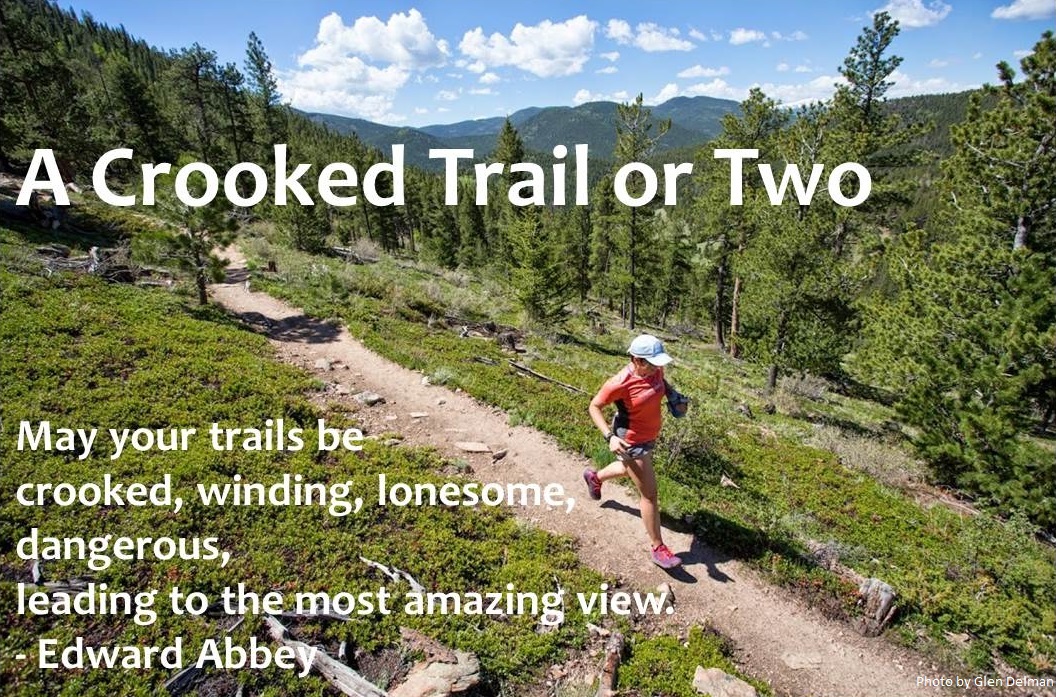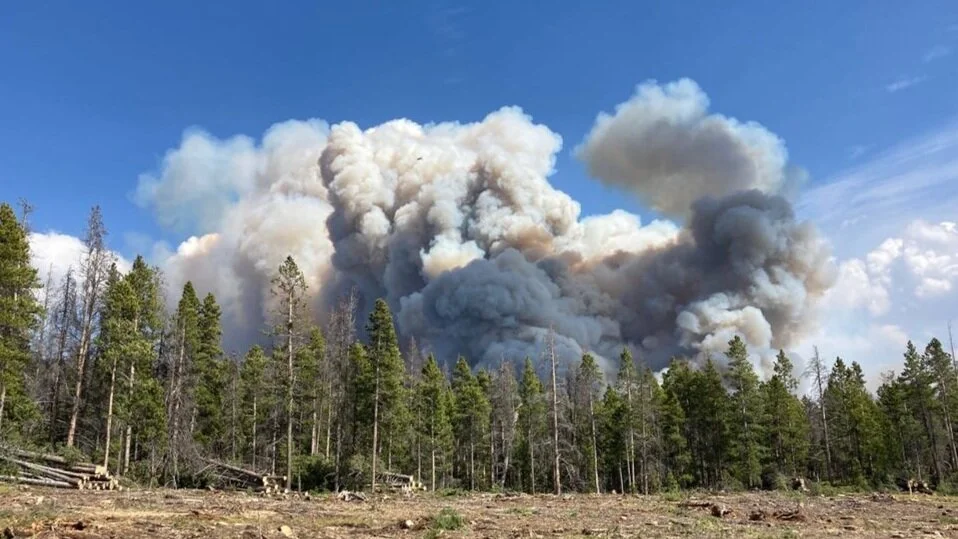Week 11: Highclere to the Outskirts of Oxford
As the Cameron Peak fire continues to burn, I’m finding my virtual run from Land’s End to John O’Groats to be an even MORE welcome escape from reality. Yesterday it rained ash again, and the smoke continues to infuse our house with the smell of campfire… something we ordinarily love, but which has an ominous association these days.
The past two days have unfortunately served up the perfect recipe for fire expansion: heat, coupled with winds gusting to 60 miles per hour. The fire has expanded its footprint to over 124,000 acres, and is currently 25% contained. Additionally, this weekend the Mullen wildfire broke out in southern Wyoming, which (as it’s now grown to 68,000 acres) led to some evacuations in northern Colorado. The concern was that people living close to the Mullen Fire have limited options when it comes to evacuation, as the eastward roads they might ordinarily take to travel to safety are currently closed due to the Cameron Peak Fire.
And people continue to deny that climate change is happening?!
The Cameron Peak Fire on September 26 (credit: Adams County)
The Cameron Peak Fire on September 26 (credit: Loveland Fire & Rescue)
The Cameron Peak Fire on September 26 (credit: TheDenverChannel.com)
The firefighters are on our minds every day, as we tune into the daily updates and hear about dangerous conditions and concerns about which way the fire might move next. Of course, given the poor air quality, I continue to make progress north through Great Britain via the rower in my garage.
So, let’s get back to Great Britain…
This stretch of the route is basically a straight line north, from Highclere Castle to the outskirts of Oxford. First, we pass through the town of Newbury, along the banks of the River Kennet and the Kennet & Avon Canal.
Just north of Newbury is Donnington Castle, built in 1386 by Sir Richard Abberbury the Elder. There had been an estate at Donnington since 1292, but the fortifications (including the castle gatehouse, which is what survives today) date from 1386. A dozen years later, Thomas Chaucer (son of the poet Geoffrey Chaucer) bought the castle for his daughter, Alice, who later became Duchess of Suffolk.
Donnington Castle (with the remaining foundations of the castle walls)
Donnington Castle’s gatehouse
About 250 years later, when the English Civil War began, Donnington Castle was owned by the family of Parliamentarian John Packer. But it soon was taken for the king, and held by Sir John Boys. That didn’t last long… by 1644, parliamentarians laid siege to the castle, and for a year and a half, the garrison held. But eventually Boys surrendered the castle in April 1646.
Later that year, Parliament voted to demolish the castle. The impressive gatehouse and the foundations of the castle walls are all that remain standing. Fortunately, the site is now a protected historic building and is open to the public.
Scutchamer Knob, an early Iron Age round barrow
Not far up the road, we come to Scutchamer Knob, an early Iron Age round barrow, which is an elevated mound of earth raised over a burial place. As University of Chester Professor Howard Williams explains on his blog post about Scutchamer, this mound likely used to be a lot taller; it would have been one of the only sites offering panoramic views over long distances, making it possible to communicate by beacon or other signals. Sources from 990-992 also confirm Scutchamer served as a “shire moot” or assembly place. The shire’s forces would have congregated here to prepare for battle, and sources indicate there was also a curse upon any enemy army who dared to set foot upon it!
George Orwell’s press card photo from 1943. Courtesy Branch of the National Union of Journalists (BNUJ)
Further up the road, we might pause in the town of Abington to pay our respects to Eric Arthur Blair, better known by his pen name: George Orwell.
Born Eric Arthur Blair in eastern India in 1903, he was educated in England before embarking on an adventurous life characterized by a desire to honestly report the truth about many of the world’s forgotten, overlooked people. He also, as the Orwell Foundation describes it, aimed to “confront uncomfortable truths.”
His writing was a mixture of reportage, political criticism, and personal reflection. His own experiences as part of the Indian Imperial Police in Burma, working menial jobs in Paris and London, interviewing unemployed miners in the 1930s, and fighting on the Republican side during the Spanish Civil War, all found their way into his writing.
Perhaps best known for having written the political fable Animal Farm and the dystopian novel 1984, his contributions go far beyond those two novels and have inspired generations of reporters, political thinkers, and others seeking to live lives of integrity.
And finally, this week’s route ends just as we cross the Thames for the first time, about to enter the city of Oxford. As I wrap up this post to tune in for tonight’s Cameron Peak Fire update, the Thames seems like the ideal place to imagine myself: cool, calm, and not on fire.
The River Thames - also known as the River Isis through Oxford - photo by Zxb on Wikimedia.
Fancy a pint?
Unlike the Naylor brothers, who pledged to “abstain from all intoxicating drink” during their 1871 walk on this route, I’m not at all opposed to popping into interesting-looking pubs along the way. Here are a few along this stretch of the journey:
The Red House in Marsh Benham
Up the hill from the River Kennet in Marsh Benham (just outside Newbury) is The Red House, an old-fashioned thatched pub offering local ales and a curated wine list. It also offers vegan options, and the bread served here is baked locally. Mmmm!
The Crown and Horns in East Ilsley
If you’re craving a cozy room with a fireplace and oak beams where you can enjoy a quiet pint with friends, the Crown and Horns in East Ilsley looks like it would fit the bill. Online reviewers who stayed in one of the comfortable rooms also noted that the staff had good recommendations for walking trails in the area.
The White Horse in Abingdon
In Abingdon, whatever the weather, the White Horse looks like a good option: for sunny days, it has a beautiful outdoor terrace. And for those cool evenings, it also cozy fireplaces. The beer list gets good reviews, as do the vegan options, which include stone-fired pizzas and vegetable curry.
Sustenance for the Hungry Vegan
Bill’s Restaurant in Newbury
Bill's Restaurant in Newbury focuses on crafting local, seasonal ingredients into delicious meals and cocktails. And we’re extra-fortunate to pass through this month: In honor of World Vegetarian Day on October 1, Bill’s has partnered with vegetarian chef Madeleine Shaw to compile an extra-creative vegetarian menu, much of which is also vegan.
Wildwood, in Didcot
The Packhorse in Abingdon is a pub, so I could’ve listed it above as a comfortable place to enjoy a pint. But it offers such an extensive vegan menu I figured I’d include it in the vegan-friendly restaurant offerings!
From spring rolls, falafel and curry to a vegan risotto with locally-sourced vegetables, it looks like a wonderful place to fuel up along the way.
I’m partial to smaller, independently-owned restaurants rather than chains, but the menu at Wildwood looked amazing, and had not only vegan options, but clear labeling on the menu to help people with all kinds of other dietary restrictions or allergies.
Also, although the restaurant in Didcot (along our route) is in a new shopping area, I appreciated that the company prioritizes historic preservation and renovating old buildings whenever possible. Wildwood’s website mentions having salvaged old tiles for its Cheam restaurant’s stunning mosaics, and renovating a landmark Market House from 1772 for its restaurant in Taunton.
The Packhorse in Abingdon


















